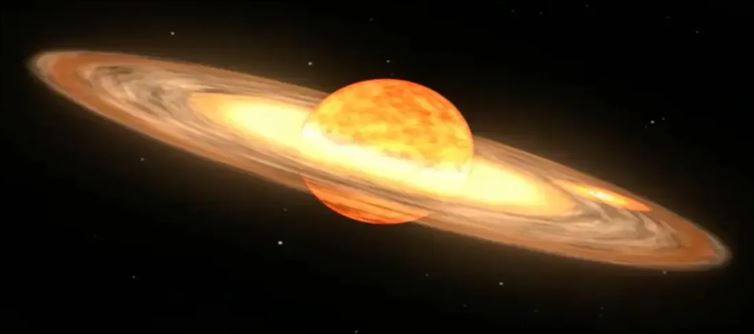Pushpa Telugu Movie Review, Rating
పుష్ప తెలుగు సినిమా రివ్యూ ,రేటింగ్
-
Cameron’s Crown Slips as Avatar Hits Franchise Low - Fire, Ash, and Rotten Scores
-
Bondi Beach Shooter Exposed - Sydney Shooter Traced Back to Hyderabad, Telangana Police Confirm
-
No Lives Matter: How a Nihilist Cult Is Turning Russian Teens Into Killers
-
Not Just the Dollar: The Rupee Is Weak Against Almost Everyone
-
Beijing Didn’t Beg Pollution to Leave. It Crushed It - The Ruthless Plan That Worked
-
15 Countries With The Most Faithful Wives - The Global Loyalty Index No One Dares to Publish
-
SP Submits Memorandum to Election CEO
-
Google Introduces Real-Time Translation for Headphones
-
Private Browsing Doesn’t Ensure Real Online Privacy
-
New Google Feature Removes Language Barriers Easily
-
Global RAM Shortage Hits Tech Market
-
Amazon Accounts at Risk from Malware Books
-
Delhi-NCR Faces Severe Air Pollution
-
Checking Blood Pressure at Home for Convenience!!
-
Dhurandhar Highlights Lyari Area of Karachi
-
Sonakshi Sinha Criticizes Air India Publicly!!
-
Rasul Pookutty Clarifies Controversy!?
-
Sunny Deol Balances Grief and Duty!!
-
Shah Rukh Khan Returns in Spy Thriller Series
-
Rakul Slams Doctor Over Plastic Surgery Claims
-
Chikiri Hits 2 Staggering Milestones!
-
Monday Numbers Drop – What Next for Akhanda?
-
“Not a Single Vote Should Be Missed!” – Stalin’s Stern Message to DMK Legal Wing Members
-
BJP Government Is Misusing Central Agencies, Alleges Chief Minister M.K. Stalin
-
MDMK General Secretary Vaiko and Marxist Leader Shanmugam Meet Chief Minister M.K. Stalin in Chennai
-
DMK Western Zone Women’s Wing Conference to Be Held in Palladam, Tiruppur District on the 29th
-
Chief Minister M.K. Stalin Holds One-on-One Meeting with Ambur and Vaniyambadi Constituency Administrators
-
KIFF 2025: Festival Preparations Underway Amid Challenges
-
Sachet-Parampara Team Up with Diljit!!
-
DDLJ Statue Unveiled in London!!?
-
Behind the Scenes of Sitaare Zameen Par!!
-
Want to Make Jalebi Using Paneer? A Unique Twist on a Classic Sweet
-
Indian Footballer Criticises Messi’s India Tour, Sparks Debate
-
Actor Nassar’s Request and Chief Minister M.K. Stalin’s On-Stage Response Draw Attention
-
Today’s Horoscope (16-12-2025): A Day When Long-Held Dreams Begin to Come True
-
Job Opportunities at Mylapore Kapaleeshwarar Temple: Candidates with 8th Standard Education Can Apply
-
Chief Minister M.K. Stalin Lays Foundation Stone for New Tamil Nadu Haj House
-
Tragic Small Plane Crash in Central Mexico — At Least 7 Dead
-
James Gunn Didn’t Reboot the Justice League — He Outsmarted It
-
Captain America vs Doctor Doom: Marvel’s Most Personal War Yet
-
Ivory, Effortless, Inevitable: Why Everyone’s Watching Sreeleela
-
No Films, No Rush — Just Nabha Natesh in Her Power Era
-
Overshadowed on His Own Song? Why Pooja Hegde Was Silenced
-
Plunging Gown, Unblinking Confidence — Sydney Sweeney Owns the LA Premiere of 'The Housemaid'
-
1,435 Couples. 5 Seconds. One Giant Smooch: D.C. Makes History
-
The Smelliest Discovery in Brain Science Might Be a Game-Changer - Your Fart Could Protect Your Brain
-
Tolls, Hotels, Helplines — But Not the Names of the Guilty - NHAI’s QR Gimmick Exposed
-
Liberty Knocked Down by Nature: Statue Topples in Brazil
-
Snow Day in NYC: Central Park Turns Storybook Overnight
-
Avengers: Doomsday Was Supposed to Dominate — Instead It Leaked
-
If You Move Just to Change the Country — That’s Not Immigration
-
‘A True Australian Hero’: PM Honours Man Who Stopped Bondi Attack
-
Imran Khan Won the World Cup. Now He’s Rotting in Solitary.
-
China Weaponizes Pandas — Japan Is the First Casualty
-
‘Capture This Animal’: Trump’s Cold Response to a Campus Shooting
-
Body-Shamed, Humiliated, Then Accused: The Groom’s Side That Went Viral Last
-
Taylor Swift Made $2 Billion — Then Did What Most Billionaires Never Do
-
China Didn’t Just Jail a Man — It Executed a City’s Soul
-
This Wasn’t Mob Fury — It Was Sanghi Hate With a Clear Target
-
Ancient Indians Didn’t Sprinkle Water for God — They Did It for Clean Food
-
Time Means Nothing to Pennywise — Welcome to Derry’s Ending Changes Everything
-
Censored, Banned, Immortal: India’s First On-Screen Kiss
-
Four Trailers, One Disaster: Marvel’s Doomsday Plan Is Marketing Madness
-
The End of Hawkins Is Here: Stranger Things 5 Vol. 2 Trailer Is Pure Nightmare Fuel
Empowering 140+ Indians within and abroad with entertainment, infotainment, credible, independent, issue based journalism oriented latest updates on politics, movies.
India Herald Group of Publishers P LIMITED is MediaTech division of prestigious Kotii Group of Technological Ventures R&D P LIMITED, Which is core purposed to be empowering 760+ crore people across 230+ countries of this wonderful world.
India Herald Group of Publishers P LIMITED is New Generation Online Media Group, which brings wealthy knowledge of information from PRINT media and Candid yet Fluid presentation from electronic media together into digital media space for our users.
With the help of dedicated journalists team of about 450+ years experience; India Herald Group of Publishers Private LIMITED is the first and only true digital online publishing media groups to have such a dedicated team. Dream of empowering over 1300 million Indians across the world to stay connected with their mother land [from Web, Phone, Tablet and other Smart devices] multiplies India Herald Group of Publishers Private LIMITED team energy to bring the best into all our media initiatives such as https://www.indiaherald.com





 click and follow Indiaherald WhatsApp channel
click and follow Indiaherald WhatsApp channel